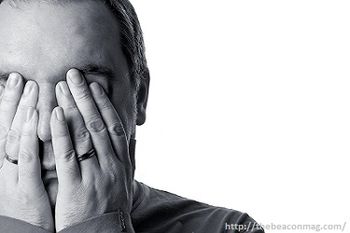
- Psychiatric Times Vol 28 No 9
- Volume 28
- Issue 9
Deep Brain Stimulation Surgery for OCD: On Safety, Efficacy-and Financial Incentives
On Safety, Efficacy-and Financial Incentives
On February 19, 2008, the FDA approved the use of deep brain stimulation (DBS) for the treatment of obsessive-compulsive disorder (OCD).1 The action made Medtronic’s Reclaim product the first medical device approved for the treatment of any psychiatric disorder, including OCD. The FDA granted Medtronic a Humanitarian Device Exemption (HDE)-approval for a medical device that is used to treat conditions that affect no more than 4000 people per year in the United States. This streamlines the approval process and obviates the necessity of conducting time-consuming and expensive randomized clinical trials.
In its press release accompanying the Approval Letter, the FDA noted, “The approval of the human device exemption was based on a review of data from 26 patients with severe treatment-resistant OCD who were treated with the device at 4 sites.” Those results were published in the May 2008 issue of Molecular Psychiatry.2 The researchers concluded that DBS produced “clinically significant symptom reductions and functional improvement in about two-thirds of patients” and that any adverse effects “were overwhelmingly transient.”
An article published in the February 2011 issue of Health Affairs called into question the FDA’s grant of the HDE.3 Citing the dearth of evidence that supports the safe and effective use of DBS for OCD, the authors argue that the FDA should rescind the HDE for Reclaim and urge that “Congress and federal regulators should revisit the humanitarian device exemption to ensure that it is not used to sidestep careful research that can offer valuable data with appropriate patient safeguards.”
A short history of DBS
The seeds of DBS were sown as long ago as 1870, when German researchers Gustav Fritsch and Eduard Hitzig4 published an article on their experiments in stimulating a dog’s cerebrum with electrical current. Within a few years, researchers had replicated these findings in humans.5 Inspired by this discovery, researchers and clinicians applied electrical stimulation to map the cortex in the 1930s, probe deeper into the brain in the 1950s, aid in placement of surgical lesions in the 1960s, and treat chronic pain and movement disorders in the 1970s.6
DBS as we know it today is the product of these early developments and the advent of implantable cardiac pacemaker technology. Some of the earliest, successful clinical uses of the new DBS technology were for the treatment of Parkinson disease and chronic pain.7,8
Reports of the use of DBS to treat OCD began to appear in the early 2000s.6 These short-term studies on samples of 1 to 4 patients reported moderate to dramatic reductions in OCD symptoms. The turning points in both clinical application and FDA policy, however, can be tied to the article published in Molecular Biology in 2008.2 Four “small-scale” studies conducted in medical centers in Leuven/Antwerp, Belgium; Butler Hospital/Brown University, Providence, RI; the Cleveland Clinic; and the University of Florida collaborated on a study with a total of 26 subjects. Greenberg and colleagues note that DBS “has emerged as a well-accepted alternative to ablative procedures for movement disorders” and that “[i]t is currently be-ing investigated for highly resistant OCD.” The researchers placed the DBS apparatus in the most common location chosen by earlier researchers: the junction of the ventral capsule/ventral striatum. They used the Yale-Brown Obsessive Compulsive Scale to measure results.
Patients who had failed “to obtain meaningful OCD improvement after adequate conventional treatment” were selected for the study. Patients who had had psychotic or manic episodes in the past 3 years were excluded, as were those who exhibited medical conditions that contradicted surgery. The researchers tabulated results on all patients for at least 12 months and for as long as 36 months. The outcomes were positive: “clinically significant symptom reductions and functional improvements were seen in over 60%” and “the vast majority of adverse effects were transient.” Moreover, because of an apparent “learning curve,” the more recent patients tended to exhibit better outcomes than earlier patients, which implied even better results in the future.
The lead investigator on the project, Benjamin D. Greenberg, MD, PhD, put the results succinctly in Medtronic’s press release that would accompany the FDA’s announcement of HDE approval for Reclaim: “Our work, plus that of colleagues in Europe, shows that DBS is a promising treatment for a subset of patients with OCD who have re-mained very ill and debilitated despite aggressive use of medications and cognitive-behavioral therapy.”9
FDA’s HDE for Reclaim
Congress created the HDE with its enactment of the Safe Medical Devices Act of 1990 (SMDA). Congress had recognized that research and development costs might surpass anticipated market returns for devices designed to treat rare diseases and conditions. The SMDA established the Humanitarian Use Device (HUD) which, by way of an HDE grant, is exempt from the FDA’s requirement of costly and time-consuming clinical trials to demonstrate the effectiveness of a medical device. The FDA may grant an HDE if:
• The device is to be used to treat or diagnose a disease or condition that affects fewer than 4000 individuals in the United States per year
• The device would not be available to a person with such a disease or condition unless the exemption is granted
• No comparable device . . . is available to treat or diagnose the disease or condition
• The device will not expose patients to an unreasonable or significant risk of illness or injury, and the probable benefit to health from using the device outweighs the risk of injury or illness from its use, taking into account the probable risks and benefits of currently available devices or alternative forms of treatment10
Unlike conventional medical device applications, an HDE application need not contain clinical data that demonstrate effectiveness. Rather, the HDE application need only provide “reasonable assurance . . . based upon valid scientific evidence, that in a significant portion of the target population, the use of the device for its intended uses and conditions of use . . . will provide clinically significant results.”
Except for devices used for pediatric patients, the SMDA prohibits the sale of an HUD “for an amount that exceeds the costs of research and development, fabrication, and distribution of the device.” An HDE is valid for a term of 18 months and is renewable for an unlimited number of 19-month terms so long as ap-proval criteria continue to be met. Finally, HUD manufacturers must comply with all FDA post-approval reporting requirements, including the reporting of all adverse effects.11
The press release that Medtronic issued on the FDA’s approval contained a statement that would prove controversial: “While OCD is estimated to affect 1 in 50 adults in the United States, it is anticipated that DBS therapy will be appropriate for a small subset of the patient population, below the threshold of 4000 patients per year allowed under an HDE.”9
The “HDE misuse” controversy
In February 2011, Medtronic’s claim, Reclaim’s eligibility for an HDE, and the very structure of the FDA’s HUD approval process were challenged in an article in Health Affairs.3 The authors, a collection of physicians, professors, ethicists, and philosophers from universities in the United States and Europe, wrap up the article with a dramatic conclusion: “With a humanitarian device exemption, a manufacturer can generate publicity and create a market for a device, to the advantage of the company’s bottom line but to the potential detriment of science and society.”
The authors buttress this conclusion with 2 principal arguments. First, they challenge Reclaim’s eligibility for an HDE for treatment-resistant OCD. The NIMH has estimated that 2.2 million adults have OCD. Between 20% and 30% “have a variant severe enough to be included in a deep brain stimulation study.” As a result, the eligible number of patients ranges from 440,000 to 660,000, or more than 100-fold the FDA maximum of 4000.
More pointedly, the authors assail the HDE program as a loophole that device manufacturers misuse to avoid paying FDA fees and to sidestep the cost of clinical trials. Indeed, the exemption, according to the authors, has stood FDA policy on its head: “It seems clear that the humanitarian device exemption is being used to give the device manufacturer access to patients, rather than giving researchers access to subjects, or patients access to sound scientific evidence.” The result is that patient safety is compromised and that a treatment that might benefit the many is limited to the few.
The Health Affairs article has “spurred impassioned debate among neurologists, psychiatrists, neurosurgeons, ethicists, the device manufacturer, and the regulatory agency.”12 This debate is most dramatically depicted in 3 letters published in the June 2011 issue of Health Affairs (1 by Medtronic, 1 by 3 of the authors of the “Misuse” article, and 1 by the FDA).13-15
Medtronic’s central contention is that the “Misuse” article authors overstated the prevalence of severe, treatment-resistant OCD. Medtronic contends that “published epidemiological data and criteria from physicians who specialize in treating OCD” reveal that there are fewer than 1000 eligible patients in the United States. And, more pointedly, since the approval of Medtronic’s device in 2009, fewer than 50 US patients with OCD have been treated with the device.
The authors of the “Misuse” article respond that they stand by the peer-reviewed data cited in their paper and add that “the number of eligible subjects, rather than the number who enroll in a study, is the criterion for an exemption.”
The FDA’s central contention is that “the article contains factual errors, omissions, and misconceptions regarding the humanitarian device exemption pathway.” Those errors include some obvious misreadings of the Food, Drug, and Cosmetics Act and its accompanying regulations. But, those errors are not central to the authors’ arguments about the prevalence of severe, treatment-resistant OCD or device manufacturer incentives to obtain an HDE.
The FDA does, however, raise 2 points central to the authors’ contentions. First, the FDA replies to the authors’ arguments about corporate financial incentives to obtain an HDE by noting that the governing statute prohibits profiting on HUDs, except for those approved for pediatric use. Second, the FDA challenges the authors’ assertion, as does Medtronic, that there are far more than 4000 people in the country who are eligible for the treatment. They con-tend that the appropriate population for the device is not all patients who have severe OCD, but only those adult patients who are treatment-resistant (ie, those in whom treatment with at least 3 SSRIs has failed). According to the FDA, there are fewer than 4000 such patients in the country. “In sum, humanitarian device exemptions have been, and will continue to be, reserved for devices that serve small, underserved patient populations and satisfy all regulatory and scientific criteria for approval. We appreciate the opportunity to provide clarification on the program.”
The future of DBS and a proposal for change
The FDA is resolute in its decision in this case. Moreover, Greenberg, the lead author of the 2008 article in Molecular Psychiatry has conceded that the granting of the HDE has likely made it more difficult for him to recruit subjects for his clinical trial.12 Once patients are aware of the treatment, they are reluctant to enroll in blind studies designed to evaluate the treatment.
So, the die has been cast. We can only hope for successful clinical trials. In the meantime, patients and clinicians are left with modest Reclaim programs that have so far, by Medtronic’s measure, resulted in fewer than 50 DBS implants for OCD patients.
But, this case does offer lessons. The discourse has raised a number of important issues, including the safety of patients, the effectiveness of the treatment, and financial incentives of device manufacturers. These issues will present again in the future, and their resolution will depend on the answer to a single question: are there fewer than 4000 patients in the United States who are eligible for the proposed treatment? If there are fewer, then even the critics of the Reclaim HDE would agree that the exemption is justifiable.
Given a small population, device manufacturers will not have the financial incentive to conduct costly clinical trials and produce a treatment. If there are more than 4000, even the supporters of the Reclaim HDE would agree that broad clinical trials provide the appropriate pathway to making the best decision on the safety and effectiveness of a given treatment.
There are risks to erring on either side of the answer. Overestimating the target population will lead to clinical trials and delay treatment for underserved patient populations. Moreover, in the long run, device manufacturers forced into financial-ly unrewarding arrangements will become reluctant to serve those underserved populations. On the other hand, underestimating the target population jeopardizes later clinical trials.
The current debate dramatizes this issue because it is occurring 2 years after the FDA granted the HDE. To the extent that the decision jeopardized the clinical trials, the damage may already largely have been done. This conundrum may actually sug-gest a relatively simple solution. The current statutes mandate that the FDA complete its HDE review within 75 days of receiving an application.11 The FDA could promulgate a new regulation allowing for public comment on the question of whether the targeted population for a medical device exceeds 4000 people in the United States. Framing the question narrowly would help avoid overly politicizing the process. In addition, it would make it feasible to limit the comment period to the first 30 days of the 75-day review period. That would allow the FDA an additional 45 days to review the application after receiving all comments. Most important, the public comment would allow for debates like the current one to occur before the HDE is granted.
The authors of the Health Affairs article suggest broad statutory and regulatory reform of the HDE process.2 The simple 30-day comment period would allay their concerns, not overly burden the FDA, not add to the burdens of the device manufacturer, and be much simpler to implement. Hopefully, the comment period would also increase public and professional confidence in the HDE program.
References:
References
1.
US Food and Drug Administration. FDA News Release: FDA Approves Humanitarian Device Exemption for Deep Brain Stimulator for Severe Obsessive-Compulsive Disorder. February 19, 2009.
http://www.fda.gov/NewsEvents/Newsroom/PressAnnouncements/2009/ucm149529.htm
. Accessed July 30, 2011.
2.
Greenberg BD, Gabriels LA, Malone DA Jr, et al. Deep brain stimulation of the ventral internal capsule/ventral striatum for obsessive-compulsive disorder: worldwide experience.
Mol Psychiatry
. 2010;15:64-79.
3.
Fins JJ, Mayberg HS, Nuttin B, et al. Misuse of the FDA’s humanitarian device exemption in deep brain stimulation for obsessive-compulsive disorder.
Health Aff (Millwood)
. 2011;30:302-311.
4.
Fritsch G, Hitzig E. Uber die elektrische Erregbarkeit des Grosshirns.
Arch Anat Physiol Wissen
. 1870;37:300-332.
5.
Bartholow R. Experimental investigations into the functions of the human brain.
Am J Med Sci
. 1874;67:305-313.
6.
Perlmutter JS, Mink JW. Deep brain stimulation.
Annu Rev Neurosci
. 2006;29:229-257.
7.
Benabid AL, Pollak P, Gervason C, et al. Long-term suppression of tremor by chronic stimulation of the ventral intermediate thalamic nucleus.
Lancet
. 1991;337:403-406.
8.
Richardson DE. Deep brain stimulation for the relief of chronic pain.
Neurosurg Clin N Am
. 1995;6:135-144.
9.
Medtronic. News Release: Medtronic Receives FDA HDE Approval to Commercialize the First Deep Brain Stimulation (DBS) Therapy for a Psychiatric Indication in the United States. February 19, 2009.
http://wwwp.medtronic.com/Newsroom NewsReleaseDetails.do?itemId=1235065362795&lang=en_US
. Accessed July 30, 2011.
10.
Food, Drug, and Cosmetic Act, 21 USC §360 (2011).
11.
Food and Drug Administration, 21 CFR §803, §814 (2011).
12.
Hurley D. Should the FDA rescind the humanitarian exemption for DBS?
Neurol Today
. 2011;11(5):1, 10.
13.
Alpert S. A humanitarian device exemption for deep brain stimulation.
Health Aff (Mill-wood)
. 2011;30:1212.
http://www.ea-aw.org/fileadmin/downloads/Projektgruppen/HealthAffairsLettersMedtronicFDA_DBS.pdf
. Accessed July 30, 2011.
14.
Fins JJ, Mayberg HS, Schlaepfer TE. Humanitarian device exemptions: the authors reply.
Health Aff (Millwood)
. 2011;30:1213.
http://www.ea-aw.org/fileadmin/downloads/Projektgruppen/HealthAffairsLettersMedtronicFDA_DBS.pdf
. Accessed July 30, 2011.
15.
Eydelman MB, Chen EA. The FDA’s Humanitar-ian Device Exemption program.
Health Aff (Mill-wood)
. 2011;30:1210-1212.
http://www.ea-aw.org/fileadmin/downloads/Projektgruppen/HealthAffairsLettersMedtronicFDA_DBS.pdf
. Accessed July 30, 2011.
Articles in this issue
about 14 years ago
The Night the Planes Stopped Flying -9/11/01about 14 years ago
Psychodynamic Psychopharmacologyabout 14 years ago
Alzheimer’s Association Prompts FDA to Broaden Trialsabout 14 years ago
Misunderstanding Psychiatry (and Philosophy) at the Highest Levelabout 14 years ago
Issues in Treating Anxiety Disorders in Pregnancyabout 14 years ago
Anxiety Disorders With Comorbid Substance Abuseabout 14 years ago
Substance Use Disorders in Patients With Anxiety Disordersabout 14 years ago
Exposure Therapy for Anxiety DisordersNewsletter
Receive trusted psychiatric news, expert analysis, and clinical insights — subscribe today to support your practice and your patients.














